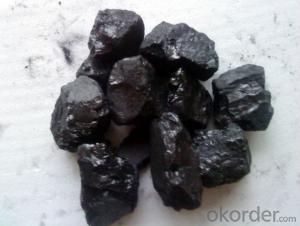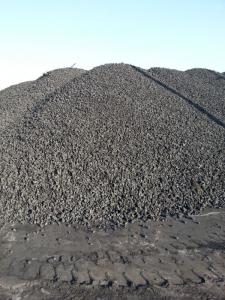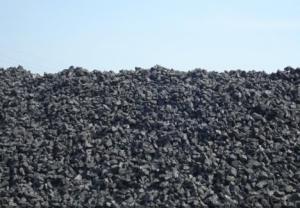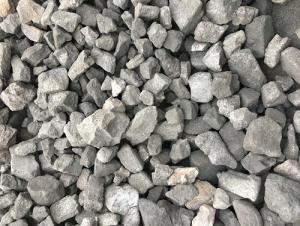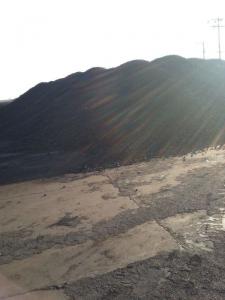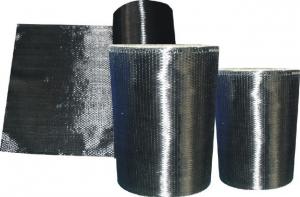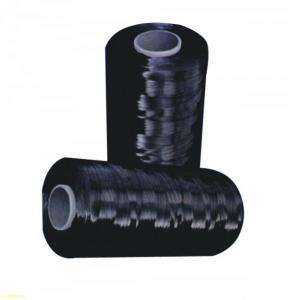Low Price of Coke Coal Metallurgical Coke Price with Low Sulfur
- Loading Port:
- Tianjin
- Payment Terms:
- TT OR LC
- Min Order Qty:
- 1000 m.t.
- Supply Capability:
- 20000 m.t./month
OKorder Service Pledge
OKorder Financial Service
You Might Also Like
1.Structure of Anthracite Description
Anthracite is made from Shanxi,the coal capital of the word .The quality is very high due to its unique resource .It has been exported to most of the world ,especially to Japan and Korea,as well as mid east.
It is commonly used in drinking water ,food industry ,chemical /dyeing industry ,sea/salt water filtration ,petro-chemical industry ,pulp/paper industry ,sauna,spa,pool,boiler ,etc.
Advantages:
1. Longer Filter Runs2. Faster Filtration3. Long Lifetime4. Good Separation Characteristics5. Savings water and power in washing6.Removes more iron and manganese salts tration ,petrochemical industry ,pulp /paper industry ,sauna,spa,pool,boiler,etc.
2. Main Features of Anthracite
Fixed Carbon: 78 %
Ash: 18 %
Volatile Matter: 4 %
Sulphur: 1.0 %
Moisture: 11 %
Gross Calorific Value: 6450 Kcal
Size: 0 mm - 19 mm: 90%
3. The Images of Anthracite
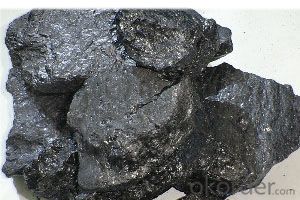
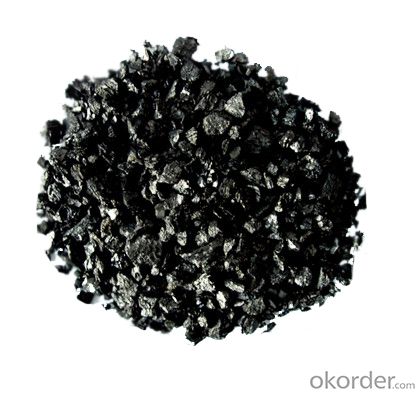
4. The Specification of Anthracite
1. Fixed carbon: 90%min
2.Uniform particles
3.Good separation characteristics
4. Long life
5. Widely used
6.activated anthracite:
7.Certificate: ISO9001, ISO9002, NSF
8.Usage: for water and air purification, etc.
5.FAQ of Anthracite
1). Q: Are you a factory or trading company?
A: We are a factory.
2). Q: Where is your factory located? How can I visit there?
A: Our factory is located in ShanXi, HeNan, China. You are warmly welcomed to visit us!
3). Q: How can I get some samples?
A: Please connect me for samples
4). Q: Can the price be cheaper?
A: Of course, you will be offered a good discount for big amount.
- Q: What is the role of carbon in respiration?
- The role of carbon in respiration cannot be overstated, as it serves as a vital element in organic molecules like glucose. When respiration takes place, glucose undergoes a breakdown with the presence of oxygen, resulting in the production of ATP energy. The carbon atoms found in glucose are oxidized, thereby releasing electrons that eventually transfer to oxygen and form carbon dioxide (CO2) as a byproduct. This entire process, which is referred to as cellular respiration, is universal among all living organisms and is indispensable for generating the energy necessary for various cellular activities. The absence of carbon would render respiration impossible and prevent the generation of energy essential for growth, movement, and other vital life functions. Additionally, the carbon dioxide generated during respiration is released into the atmosphere and plays a critical role in the carbon cycle, which contributes to the regulation of Earth's climate and supports plant growth through photosynthesis.
- Q: What are carbon credits?
- The aim of carbon credits is to lessen greenhouse gas emissions and combat climate change by using a market-based mechanism. These credits measure and quantify the reduction, removal, or avoidance of one metric ton of carbon dioxide (or its equivalent) from being released into the atmosphere. The concept behind carbon credits is rooted in the belief that certain activities or projects can offset the emissions caused by other activities. For example, renewable energy projects like wind farms or solar power plants can generate carbon credits by replacing the need for fossil fuel-based electricity generation. Similarly, projects focused on reforestation or afforestation can absorb carbon dioxide from the atmosphere and generate credits. These carbon credits can be purchased and sold in the carbon market, enabling companies or individuals to compensate for their own emissions by buying credits from projects that have successfully reduced or removed carbon dioxide from the atmosphere. This supports environmentally friendly initiatives and contributes to the overall reduction of greenhouse gases. The carbon credit system functions by creating financial incentives for activities that reduce emissions. It encourages businesses to invest in cleaner technologies and practices by assigning a monetary value to the reduction of carbon emissions. This drives the transition to a low-carbon economy and promotes sustainable development. Carbon credits play a crucial role in international efforts to tackle climate change. They are often used as a compliance mechanism for countries or companies to meet their emission reduction targets, as outlined in international agreements like the Kyoto Protocol or the Paris Agreement. Additionally, they contribute to the overall objective of limiting global temperature rise by encouraging emission reductions beyond regulatory requirements. While carbon credits have faced criticism for potentially allowing companies to continue polluting by simply purchasing credits, they remain an important tool in the fight against climate change. They provide economic benefits to sustainable projects and encourage the adoption of cleaner technologies, ultimately helping to mitigate the environmental impact of human activities.
- Q: What are the environmental impacts of carbon emissions?
- The environmental impacts of carbon emissions include climate change, air pollution, ocean acidification, and ecosystem disruptions. Carbon emissions contribute to the greenhouse effect, leading to global warming and climate change. This results in more frequent and intense extreme weather events such as hurricanes, droughts, and heatwaves. Additionally, carbon emissions contribute to air pollution, especially in urban areas, leading to respiratory problems and other health issues. Increased carbon dioxide in the atmosphere also leads to ocean acidification, threatening marine life and coral reefs. Finally, carbon emissions disrupt ecosystems by altering the natural balance of carbon cycles and causing habitat loss for many species.
- Q: Joint carbide gas incident
- The Central Bureau of investigation in India after the disaster had 12 official allegations, including the Union Carbide (India) Co., Ltd. India 8 executives when he was chairman of Warren Anderson and company, two small companies and the company itself and under the. The 1 indicted India executives have been killed, the court 7 days to negligence causing death sentence the remaining 7 India nationals guilty, including the then Indian president Keshub Mahindra is more than 70 years old, many people. According to the charges, they will be sentenced to two years in prison at most. Survivors of the gas leak and their families and local activists gathered in front of the court 7 days ago, holding banners protesting the punishment of the perpetrators too light and late. Since the conviction was made in a local court in India, the defendant had the right to appeal to a higher court, and it was estimated that the process would continue for several years. After the disaster, Anderson, the American boss of the company, returned home soon. Now he lives in New York. In July last year, the court issued an arrest warrant for Anderson, but it has not been mentioned below.
- Q: How is carbon used in the production of graphite?
- Carbon is a key component in the production of graphite. Graphite is a crystalline form of carbon with a unique structure that gives it its distinctive properties. To produce graphite, carbon is subjected to extreme heat and pressure, which causes the carbon atoms to rearrange into layers of hexagonal rings. These layers are stacked on top of each other, forming the graphite's characteristic layered structure. The process begins with a high-quality carbon source, such as petroleum coke or coal tar pitch. These carbon sources are first heated to very high temperatures to eliminate impurities and convert them into a pure carbon material called coke. The coke is then ground into a fine powder and mixed with a binder, usually a form of pitch, to form a paste. This paste is then shaped into the desired form, such as rods or blocks, and subjected to high temperatures in a furnace. The heat causes the binder to decompose and the carbon atoms to rearrange into the hexagonal layers that are characteristic of graphite. The high pressure present in the furnace helps to align the carbon layers, resulting in the formation of graphite crystals. After the furnace process, the graphite is further purified through a series of treatments, including chemical washing and acid leaching, to remove any remaining impurities. Finally, the purified graphite is shaped into the desired final product, such as pencils, electrodes, or lubricants, through processes like extrusion or machining. In summary, carbon is used in the production of graphite by subjecting a carbon source to high temperatures and pressures, resulting in the formation of graphite crystals with its unique layered structure. This process allows for the production of various graphite products that are widely used in industries such as manufacturing, electronics, and energy.
- Q: What are the impacts of carbon emissions on ecosystems?
- Carbon emissions have significant impacts on ecosystems, and these effects can be seen across various levels of the food chain. One of the major impacts is the alteration of the climate, as carbon emissions contribute to global warming and climate change. This change in temperature and weather patterns can disrupt ecosystems and lead to the loss of biodiversity. Increased carbon emissions also contribute to ocean acidification, which is the absorption of carbon dioxide by seawater, leading to a decrease in pH levels. This can have detrimental effects on marine life, particularly organisms with calcium carbonate shells such as corals, mollusks, and certain plankton species. As the acidity of the oceans increases, it becomes more challenging for these organisms to form and maintain their protective shells, leading to a decline in their populations. Furthermore, carbon emissions can impact the distribution and behavior of species. As temperatures rise, certain habitats become unsuitable for some species, forcing them to migrate or adapt to new conditions. This can disrupt the delicate balance of ecosystems, as some species may struggle to find adequate resources or may face increased competition for limited resources in their new habitats. Another significant impact of carbon emissions on ecosystems is the increased frequency and intensity of extreme weather events such as hurricanes, droughts, and wildfires. These events can lead to habitat destruction, loss of vegetation, and displacement of species, ultimately affecting the overall health and stability of ecosystems. Overall, carbon emissions have profound and far-reaching impacts on ecosystems. It is essential to reduce these emissions and transition to cleaner energy sources to mitigate these effects and protect the delicate balance of our natural world.
- Q: Buy carbon carving, how to identify him is true or false, and the quality of good or bad?
- General consumers believe that bamboo charcoal, powder, charcoal and purple carbon carving are "carbon" to do, and the former is very cheap, why not buy them, in fact, otherwise, because not the same kind of products. Bamboo charcoal and powdered activated carbon have little effect on the purification of indoor air. Their function is not different from that of a pack of quicklime - adsorption of water vapor. But consumers are not aware of this, they also propaganda have the function of purifying air and we mixed together to sell, finally, once consumers buy found not what role, will also lose confidence in carving, which makes us very sad.Let's talk about bamboo charcoal first. Charcoal is not a purple carbon carving, this is a common sense. If bamboo charcoal can also absorb toxic and harmful gases, then the main material of gas masks do not need to use more expensive activated carbon, but not sublimation of purple carbon carving, and the price of bamboo charcoal is not economical? Because the bamboo charcoal and charcoal are natural burning carbon, not activated by directional adsorption, namely, pickling, washing, activation process, the adsorption of activated carbon 1/10 is insufficient, they can have is to adjust the indoor temperature, not only this, as they advertised "bamboo charcoal is activated carbon is purple carbon carving".Say, powdered activated carbon.
- Q: What kind of industry does high-performance carbon fiber belong to?
- High performance carbon fiber is used in many industries, such as automobiles, bicycles, and even the aviation industry.. If you look at the industry type, many industries have high-performance carbon fiber figure, if divided by the industry attributes, should belong to the emerging industry, the future potential of the industry
- Q: How is carbon formed in stars?
- Nuclear fusion is the process by which carbon is produced in stars. Hydrogen atoms in the star's core go through a series of fusion reactions, eventually combining to form helium. This fusion process emits a massive amount of energy and is responsible for the heat and light emitted by stars. As the star's core grows hotter and the pressure increases, helium atoms begin to fuse, creating heavier elements. At a certain point, three helium nuclei can come together to form a carbon nucleus. This process, called the triple alpha process, requires specific conditions, including high temperature and pressure, for it to occur. The triple alpha process relies on the fact that carbon-12 possesses a distinct energy level that allows three helium nuclei to unite and create a stable carbon nucleus. This is due to the perfect alignment of carbon-12's energy level with those of helium nuclei, enabling them to overcome electrostatic repulsion and fuse together. Once carbon is generated in the star's core, it can undergo further fusion reactions, resulting in the creation of even heavier elements like oxygen and nitrogen. These elements are vital building blocks for the formation of planets, including our own Earth, as they eventually get expelled into space during the later stages of a star's evolution.
- Q: How are carbon-based polymers synthesized?
- Carbon-based polymers are synthesized through a process known as polymerization. This involves the chemical reaction of monomers, which are small molecules, to form long chains of repeating units, known as polymers. Carbon-based polymers, also known as organic polymers, are composed of carbon atoms bonded together in a backbone structure. There are various methods for synthesizing carbon-based polymers, but the most common one is called addition polymerization. In this process, monomers with unsaturated carbon-carbon double bonds, such as ethylene or propylene, undergo a reaction called addition polymerization. This reaction is initiated by a catalyst, which can be heat, light, or a chemical initiator, and it causes the monomers to join together, forming a polymer chain. Another method for synthesizing carbon-based polymers is condensation polymerization. In this process, two different types of monomers react with each other, eliminating a small molecule, such as water or alcohol, as a byproduct. The remaining monomers then continue to react, forming a polymer chain. Examples of polymers synthesized through condensation polymerization include polyesters and polyamides. In addition to these methods, there are also other techniques used to synthesize carbon-based polymers, such as ring-opening polymerization, which involves the opening of cyclic structures to form linear polymer chains, and step-growth polymerization, which involves the reaction of two or more monomers with reactive end groups. Overall, the synthesis of carbon-based polymers involves the combination of monomers through various chemical reactions to form long chains of repeating units. These polymers have a wide range of applications in industries such as plastics, textiles, and electronics, due to their desirable properties such as strength, flexibility, and thermal stability.
Send your message to us
Low Price of Coke Coal Metallurgical Coke Price with Low Sulfur
- Loading Port:
- Tianjin
- Payment Terms:
- TT OR LC
- Min Order Qty:
- 1000 m.t.
- Supply Capability:
- 20000 m.t./month
OKorder Service Pledge
OKorder Financial Service
Similar products
Hot products
Hot Searches
